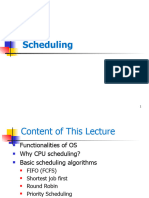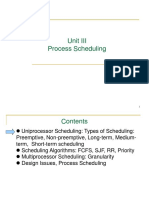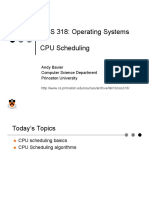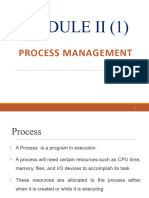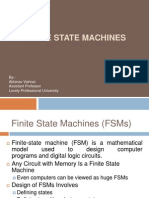0% found this document useful (0 votes)
73 views34 pagesOperating System CS205: 1st April 2019 by
The document discusses CPU scheduling in operating systems. It covers basic concepts like scheduling criteria, types of schedulers, and scheduling algorithms. The key points are:
- The scheduler decides which ready process runs next using an algorithm
- Scheduling criteria include CPU utilization, throughput, turnaround time, waiting time, and response time
- Scheduling can be preemptive or non-preemptive
- Common algorithms include first come first serve, shortest job first, priority scheduling, round-robin, and multi-level queue scheduling
Uploaded by
Okasha ShykhCopyright
© © All Rights Reserved
We take content rights seriously. If you suspect this is your content, claim it here.
Available Formats
Download as PDF, TXT or read online on Scribd
0% found this document useful (0 votes)
73 views34 pagesOperating System CS205: 1st April 2019 by
The document discusses CPU scheduling in operating systems. It covers basic concepts like scheduling criteria, types of schedulers, and scheduling algorithms. The key points are:
- The scheduler decides which ready process runs next using an algorithm
- Scheduling criteria include CPU utilization, throughput, turnaround time, waiting time, and response time
- Scheduling can be preemptive or non-preemptive
- Common algorithms include first come first serve, shortest job first, priority scheduling, round-robin, and multi-level queue scheduling
Uploaded by
Okasha ShykhCopyright
© © All Rights Reserved
We take content rights seriously. If you suspect this is your content, claim it here.
Available Formats
Download as PDF, TXT or read online on Scribd
/ 34





